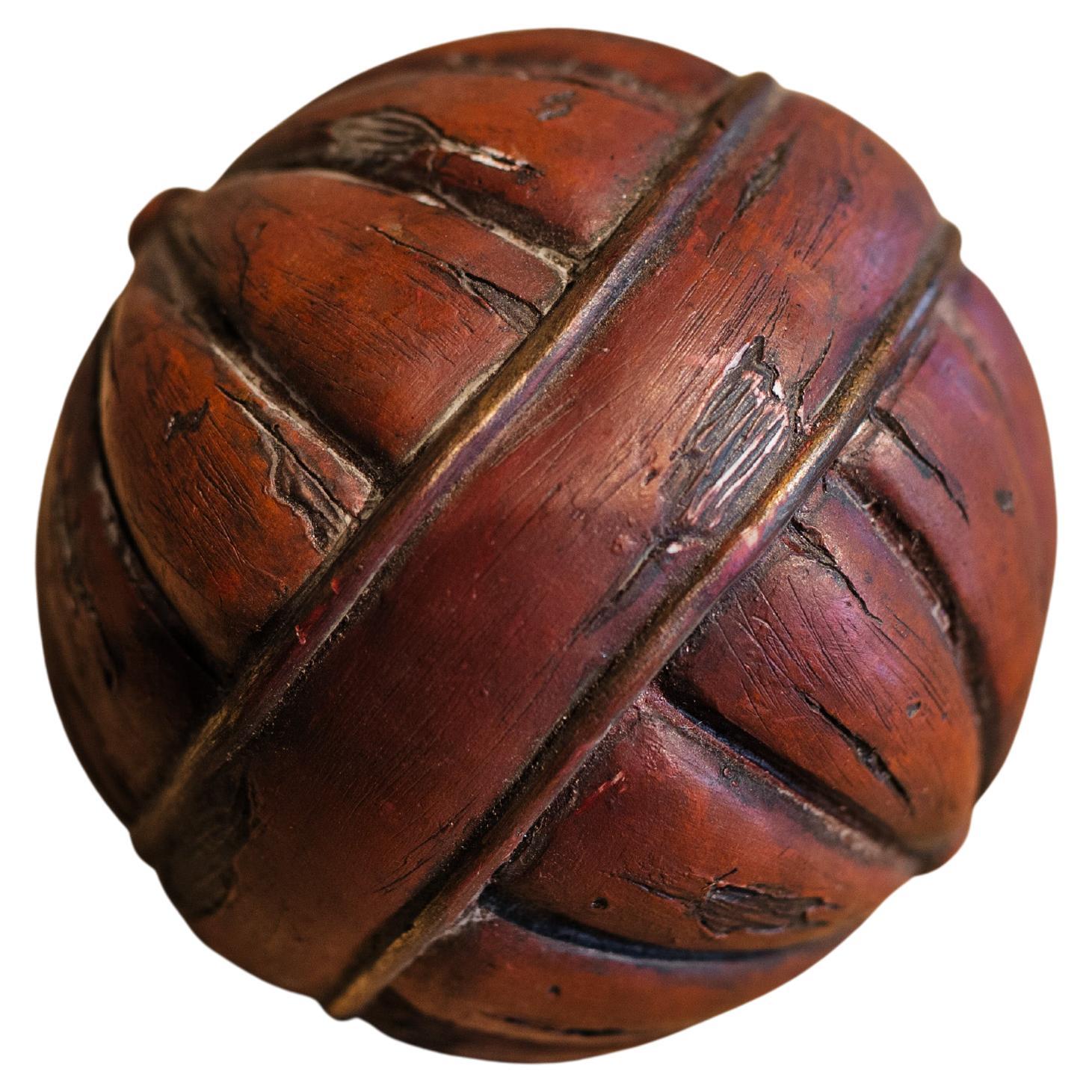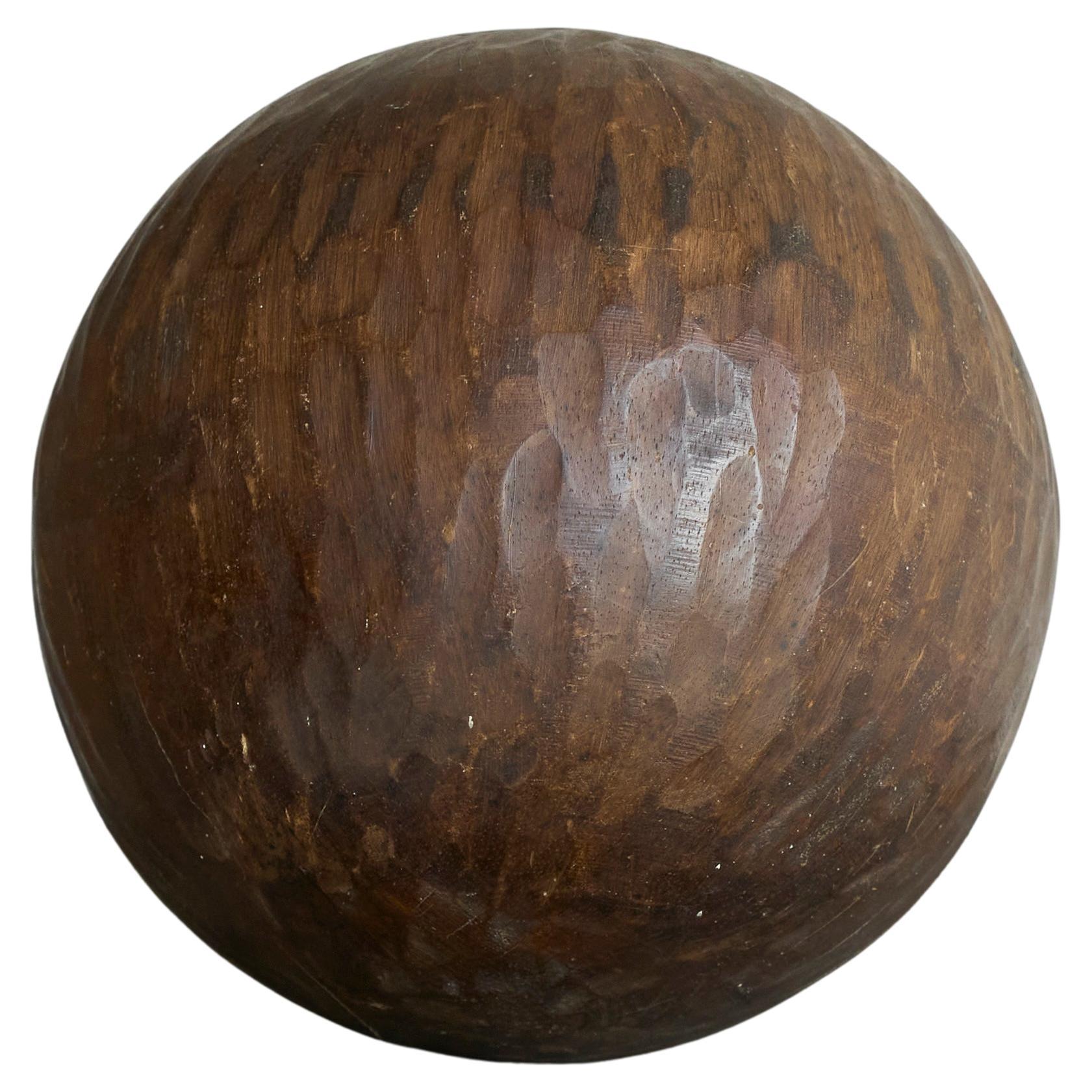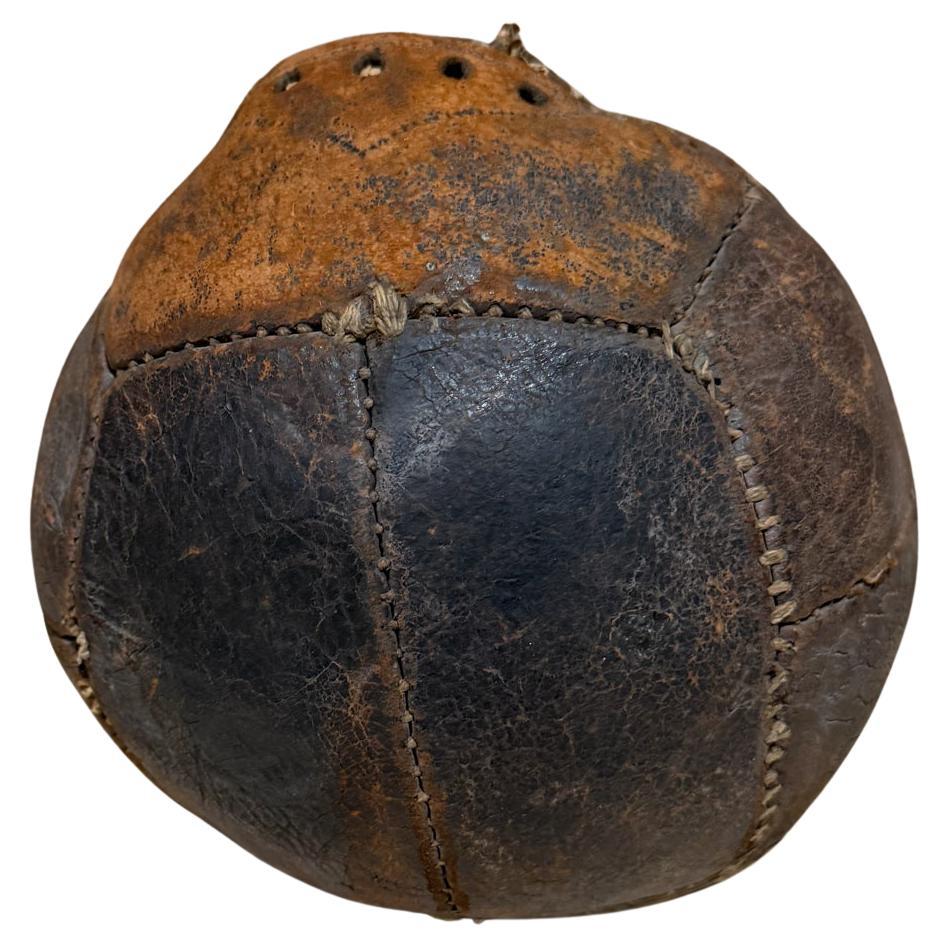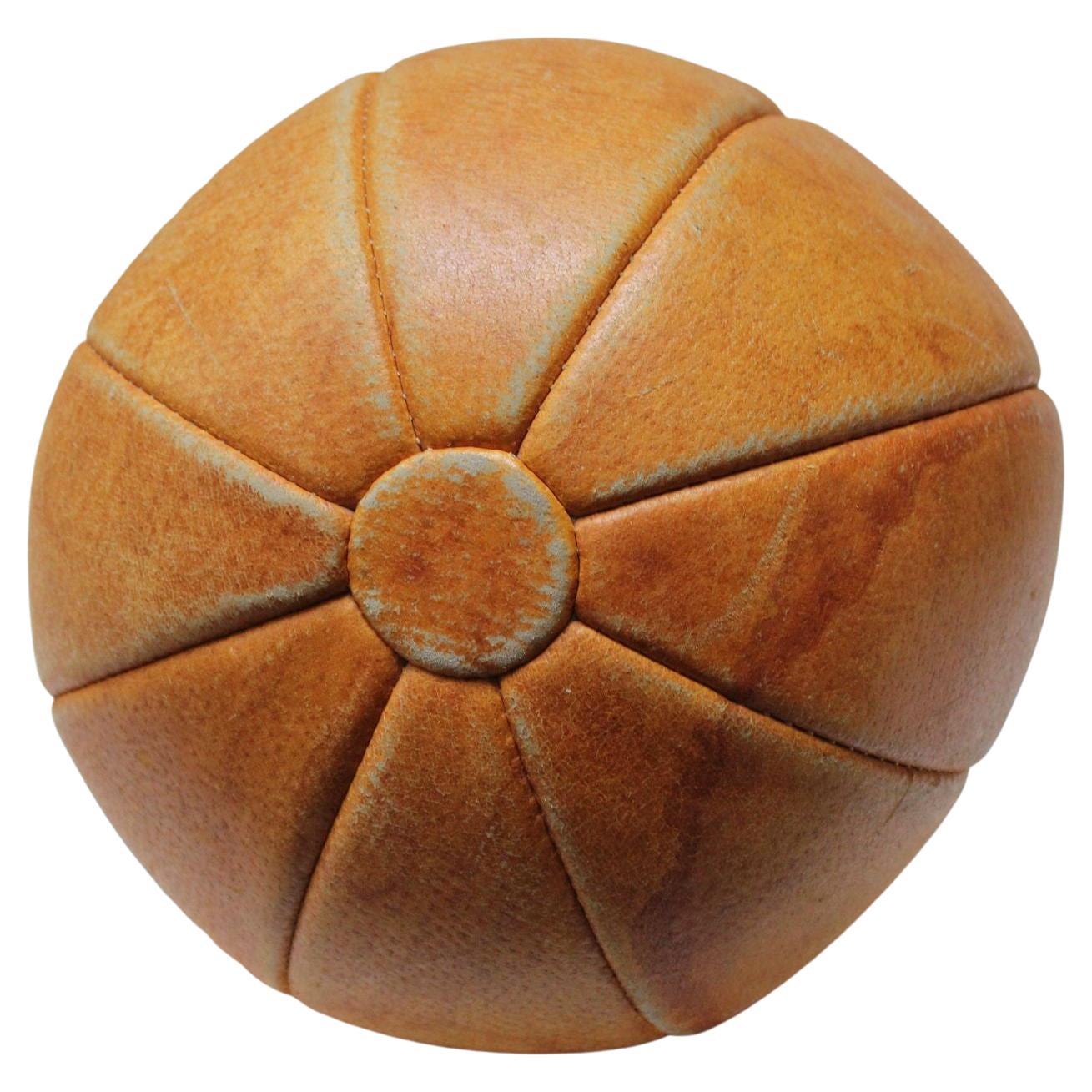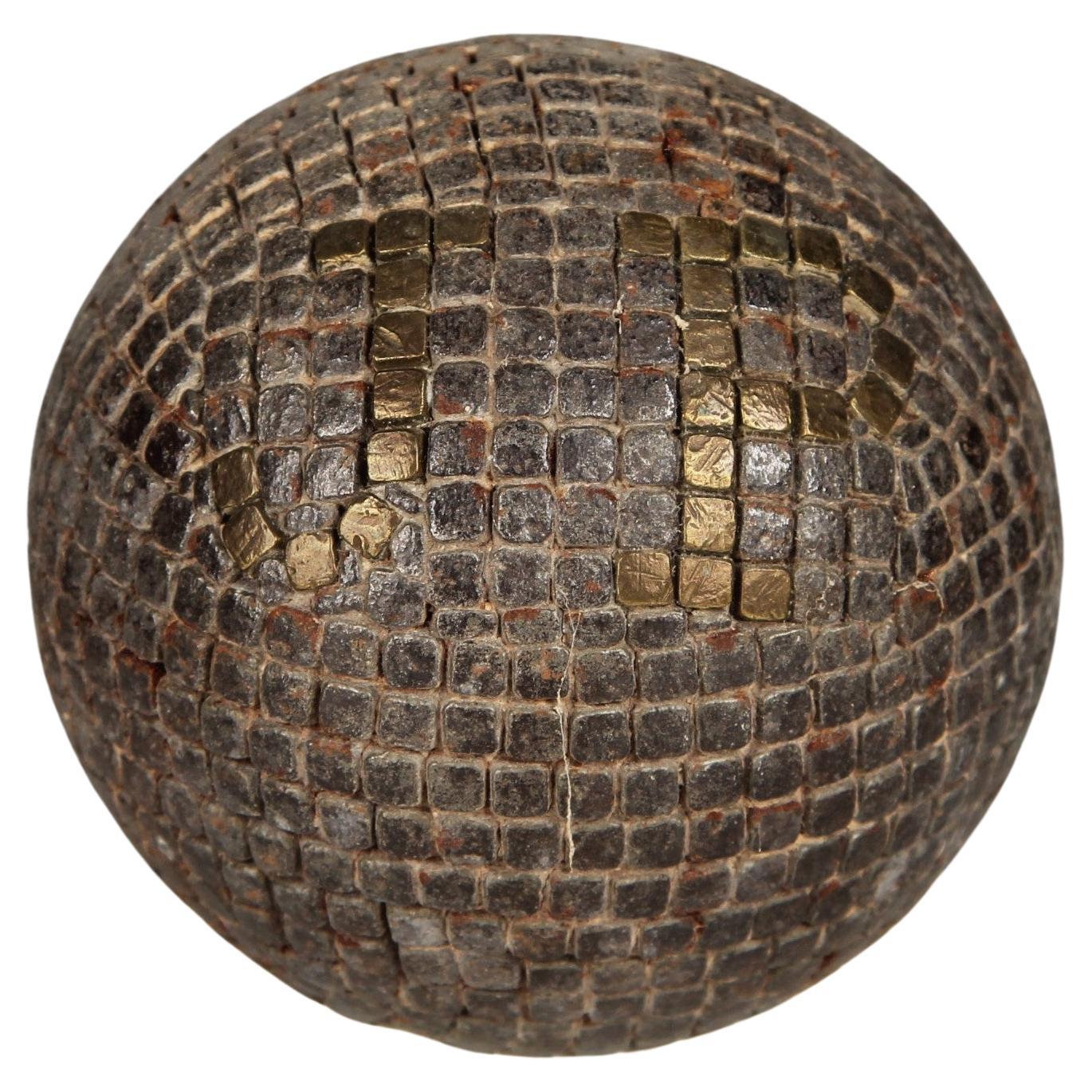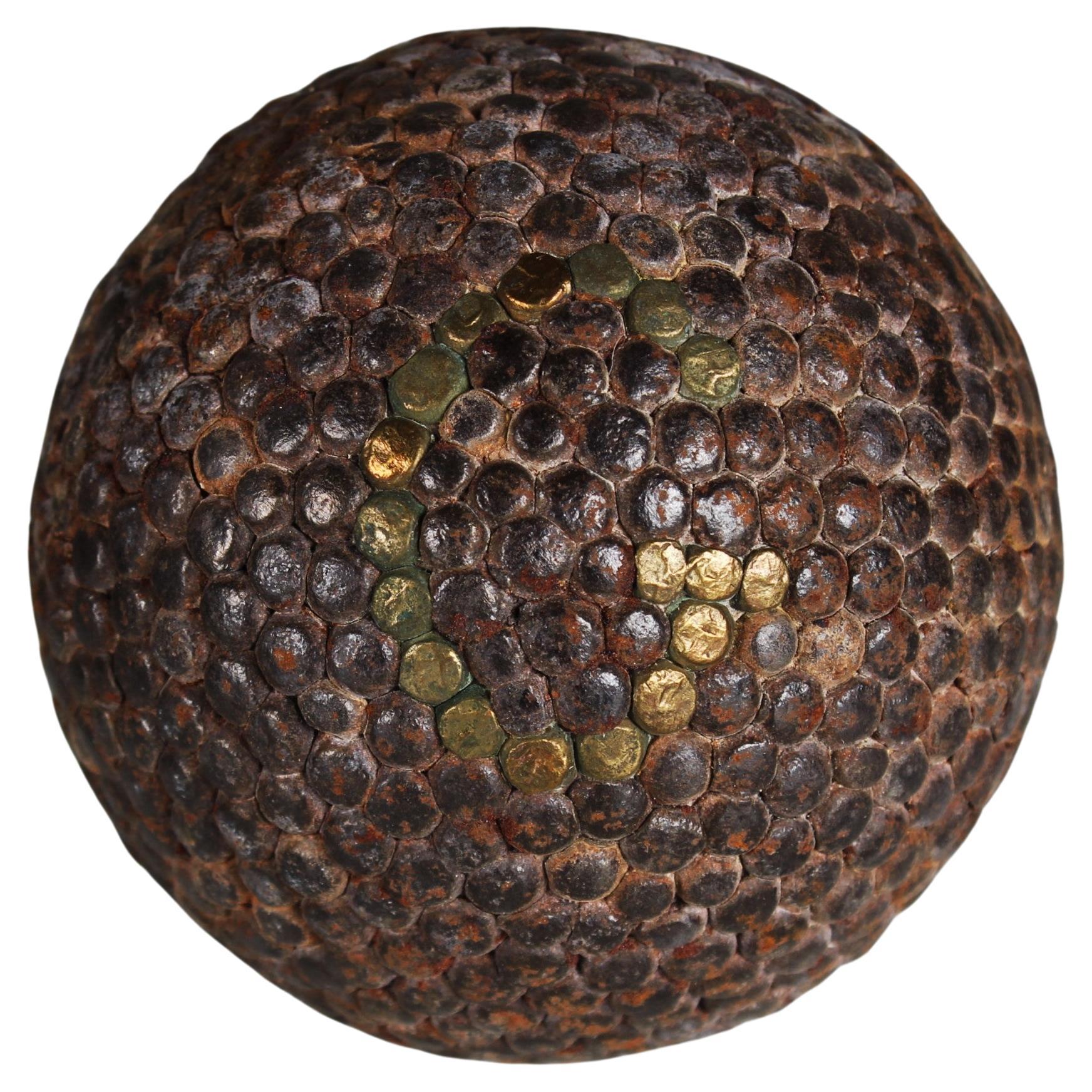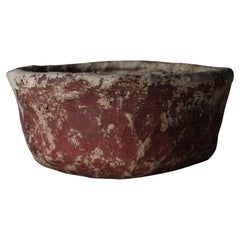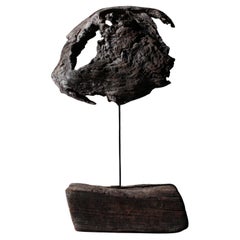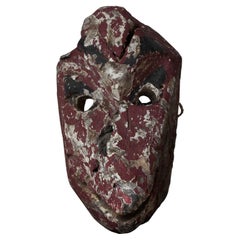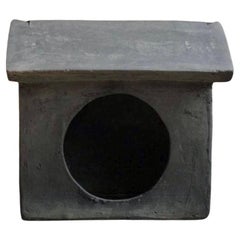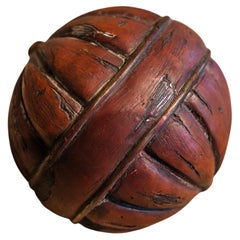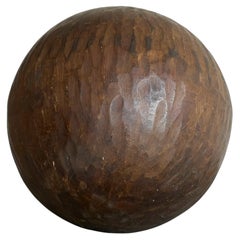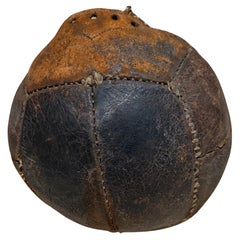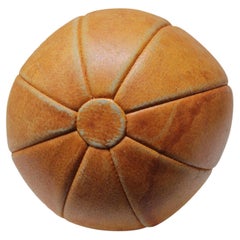Items Similar to Japanese Aging Toy Soccer Ball/ Object / 1970-1990s / Wabi-sabi Mingei
Want more images or videos?
Request additional images or videos from the seller
1 of 18
Japanese Aging Toy Soccer Ball/ Object / 1970-1990s / Wabi-sabi Mingei
$560
£428.41
€492.72
CA$799.75
A$881.54
CHF 455.50
MX$10,538.24
NOK 5,730.16
SEK 5,385.53
DKK 3,680.15
About the Item
This is an old toy soccer ball.
Over the years, the outer material has peeled off, exposing the inner material. The appearance, which has changed naturally over time, has a beauty that could not be created by human hands.
All of the elements, such as the faded color of the material and the frayed seams, have come together to form its current appearance.
We believe that this is a valuable piece of accidental beauty.
We recommend displaying this accidental beauty as it ages as a figurine or using it as an object.
Weight: 0.1kg
- Dimensions:Height: 7.88 in (20 cm)Width: 7.88 in (20 cm)Depth: 7.88 in (20 cm)
- Style:Folk Art (In the Style Of)
- Materials and Techniques:
- Place of Origin:
- Period:
- Date of Manufacture:1970-1990
- Condition:Wear consistent with age and use.
- Seller Location:Iwate-gun Shizukuishi-cho, JP
- Reference Number:1stDibs: LU9601246419412
About the Seller
4.9
Platinum Seller
Premium sellers with a 4.7+ rating and 24-hour response times
Established in 2020
1stDibs seller since 2023
96 sales on 1stDibs
Typical response time: 2 hours
- ShippingRetrieving quote...Shipping from: Iwate-gun Shizukuishi-cho, Japan
- Return Policy
Authenticity Guarantee
In the unlikely event there’s an issue with an item’s authenticity, contact us within 1 year for a full refund. DetailsMoney-Back Guarantee
If your item is not as described, is damaged in transit, or does not arrive, contact us within 7 days for a full refund. Details24-Hour Cancellation
You have a 24-hour grace period in which to reconsider your purchase, with no questions asked.Vetted Professional Sellers
Our world-class sellers must adhere to strict standards for service and quality, maintaining the integrity of our listings.Price-Match Guarantee
If you find that a seller listed the same item for a lower price elsewhere, we’ll match it.Trusted Global Delivery
Our best-in-class carrier network provides specialized shipping options worldwide, including custom delivery.More From This Seller
View AllJapanese Antique Paper Covered Basket / 1868-1912s / Wabi-sabi Mingei
Located in Iwate-gun Shizukuishi-cho, Iwate Prefecture
This is a basket with old Japanese paper pasted it.
Japanese paper colored with Bengala is pasted on a bamboo basket.
It is thought to be from the Meiji period.
The technique of s...
Category
Antique Late 19th Century Japanese Meiji Decorative Baskets
Materials
Bamboo, Paper
Japanese Old Wooden Object / Wooden Lump Figurine / Wabi-Sabi
Located in Iwate-gun Shizukuishi-cho, Iwate Prefecture
This is an old wooden object.
The details of the tree are unknown, but it seems to be hardwood.
It changes its shape and color over time, and it has become an artistic appearance.
...
Category
Early 20th Century Japanese Primitive Antiquities
Materials
Wood, Hardwood
Japanese Antique Tengu's Face / Objet / 1868-1912s / Wabi-sabi Mingei
Located in Iwate-gun Shizukuishi-cho, Iwate Prefecture
This is the old Tengu surface that was used in the Kyushu region of Japan.
It is thought to be from around the Meiji period.
Tengu noodles are said to be an amulet, a blessing, and...
Category
Antique Late 19th Century Japanese Meiji Masks
Materials
Wood
Japanese Antique Ceramic Zushi "KAWARA-ZUSHI" 1920-1930s/Object Wabi-sabi Mingei
Located in Iwate-gun Shizukuishi-cho, Iwate Prefecture
Height 21cm, width 23.2cm, depth 16cm.
An early tiled shrine"KAWARA-ZUSHI".
Ceramic shrines were made in pottery producing areas all over the country, but they are rare, and are o...
Category
Early 20th Century Japanese Showa Antiquities
Materials
Ceramic
$640 Sale Price
20% Off
Japanese Antique Wooden Scooping / Folk art objet / Primitive Wabi-sabi
Located in Iwate-gun Shizukuishi-cho, Iwate Prefecture
This is a wooden shovel that was used in old farmers in Japan.
It is made of chestnut wood and hand-carved.
It seems that the user at that time made a hole in order to drain the wa...
Category
Early 20th Century Japanese Showa More Folk Art
Materials
Wood, Chestnut
$240 Sale Price
20% Off
Japanese Antique Ceramic Zushi "KAWARA-ZUSHI" 1920-1930s/Object Wabi-sabi Mingei
Located in Iwate-gun Shizukuishi-cho, Iwate Prefecture
An early tiled shrine"KAWARA-ZUSHI".
Ceramic shrines were made in pottery producing areas all over the country, but they are rare, and are only made in Okayama today.
It is thought ...
Category
Early 20th Century Japanese Showa Antiquities
Materials
Ceramic
You May Also Like
Japanese Sphere Toy, Japan, Wabi Sabi, 20th Century / Japanese object
Located in Edogawa-ku Tokyo, JP
A charming antique Japanese wooden ball toy, hand-carved with a striking radial design. Crafted from richly toned wood with beautifully aged patina, it embodies both the simplicity a...
Category
Early 20th Century Japanese Antiquities
Materials
Wood
Antique Wabi Sabi Style Ball in Carved Wood
Located in Meer, VAN
Antique Wabi Sabi Style Ball in Carved Wood.
Beautiful hand carved sabi sabi style decorative ball in solid wood. Wonderful tactile hand carved surface - great decorative piece on a...
Category
Early 20th Century Abstract Sculptures
Materials
Wood
1920s Distressed Leather Soccer Medicine Ball
Located in Chula Vista, CA
AMBIANIC presents
Vintage Medicine Ball Patinated Leather
Interior filled with vintage newspaper clippings.
Original unrestored condition vintage patina.
Shows wear and age. Previous...
Category
Vintage 1920s American Industrial Sports Equipment and Memorabilia
Materials
Leather
Vintage German Patinated Leather Medicine Ball
Located in Brooklyn, NY
Leather medicine ball, circa 1940s, Germany.
Perfectly aged patina with natural wear/soiling present, as shown.
H: 13" x Diameter: 12.75"
Category
Vintage 1940s German Art Deco Sports Equipment and Memorabilia
Materials
Leather
Antique Boule Ball "J P", Pétanque, 1880s, France, Craftsmanship
Located in Greven, DE
Beautiful, unique Boule ball, France, late 19th Century.
In the 19th century, the manufacture of boules balls underwent significant development in France as the game of boules, part...
Category
Antique Late 19th Century French Late Victorian Antiquities
Materials
Metal, Brass
Antique Boule Ball "G", Pétanque, 1880s, France, Craftsmanship
Located in Greven, DE
Beautiful, unique Boule ball, France, late 19th Century.
In the 19th century, the manufacture of boules balls underwent significant development in France as the game of boules, particularly the pétanque variant, gained in popularity. The manufacture of boules balls during this period was a manual process that required expertise, precision and love to detail.
In the late 19th and early 20th centuries, particularly in rural areas of France and other Mediterranean regions, olive wood was a commonly used source of material for making boules balls. This was not only due to the availability of the material, but also to the outstanding properties of olive wood, which was characterized by hardness, strength and a rich grain.
First, the olive wood was carefully selected and shaped into raw balls, which were then sanded to the desired size and shape. The nails were then hammered into the balls one by one, making sure that they were evenly distributed and firmly anchored. Finally, the spheres were polished and coated with a protective varnish to enhance their natural beauty and protect them from the elements.
The use of nails to decorate and reinforce olive wood boules was a traditional practice that not only gave the ball a rustic aesthetic, but also improved its durability and contributed to customization. Many balls were made according to the specific requirements and preferences of the players. Nails were driven at regular intervals around the ball, with each nail hole precisely placed so as not to affect the balance and weight distribution of the ball. These nails not only served as a decorative element, but also helped to strengthen the structure of the ball and make it more resistant to the hard knocks and wear and tear during play. Individual engravings or decorations were often applied to the balls to make them unique and identify the player.
Antique boules...
Category
Antique Late 19th Century French Late Victorian Antiquities
Materials
Metal
